Chris Grinter, gada 19. aprīlī, 2011
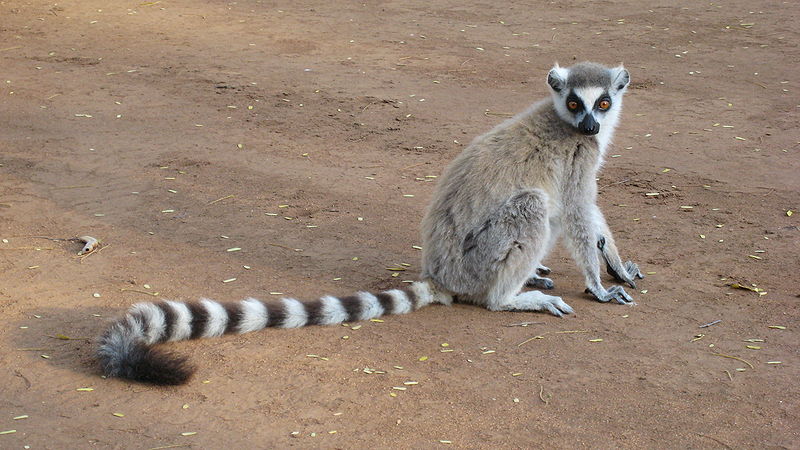 Avots: Wikipedia Izrādās, ka Ričardam Brensonam ir jauna ideja; lai izglābtu gredzenastes lemuru (Lemur catta) autors importējot tos uz savu privāto Britu Virdžīnu salu. Kā norādīts rakstā, Brensons iztērēja miljoniem mārciņu un gadiem ilgi pūlējās, lai pārvērstu salu par “ekoloģiski draudzīgākā sala pasaulē”. Bet šķiet, ka Brensona kungs ir nolēmis atteikties no dabas aizsardzības zinātnes un pārrakstīt to PR draudzīgākā veidā.. Ienāk lemuri, neskatoties uz viņa paša ekoloģiskā novērtējuma brīdinājumiem, jo viņš vēlas “…lai izveidotu otru salas dzīvotni, un apstākļi uz Moskito ir ideāli.” Varbūt Brensonam ir dīvaina pasaules vārdnīca, kurā ir vārda ideāls definīcija “kaut kas pilnīgi atšķirīgs no oriģināla”.
Labi noteikti, sākumā ideja izklausās laba – lemuri ir apdraudēti, kāpēc gan nemēģināt dot viņiem otru savvaļas patvērumu? Labi, Dr James Lazell no Saglabāšanas aģentūras ir bijis 31 gadu pieredze Virdžīnu salās un ir uz to norādījusi “Lemuri ir veikli, izveicīgs, agresīvs, visēdāji dzīvnieki, kuriem var būt kaitīga ietekme uz šo vienkāršo salu ekoloģiju. Viņi ēd pilnīgi visu - ķirzakas, augļus, saknes, kukaiņi, putni’ olas.” Ak, bet neuztraucieties, nekas slikts nevar notikt, iepazīstinot primātus salā (ieviestie primāti izposta Floridakī). Brensons zina, ka lemuri tikai to darīs “ņem nepāra gekonu” (kā reti sastopamais endēmiskais pundurgekons Sphaerodactylus partenopija), nemaz nerunājot par to, ka tie, iespējams, neizplatīsies uz citām salām “ienīst peldēšanu” (gredzenastes lemuru peldēšana).
Tad kāpēc tad riņķains? Ne tāpēc, ka tas ir visvairāk apdraudēts (tur ir daudz no citiem vairāk apdraudēti lemuri), bet tāpēc, ka tas ir pats ikoniskākais. Tas ir tas, kas mani patiešām mudina par šo smieklīgo ideju. Viņš ne tikai naivi ievieš, iespējams, invazīvu sugu jutīgā salas dzīvotnē. – bet tāpēc, ka viņš izplata nepatiesu saglabāšanas vēstījumu. Kā lēns bērns Brensons ir steidzies pie zeltneša, lai to glābtu, vienlaikus pilnībā palaidot garām visu saglabāšanas ideju.. Gredzenaste ir vadošā suga, kas pievērš uzmanību postījumiem, kas notiek Madagaskarā. Viens jauks mīlīgs dzīvnieks, kas attēlo savas dzimtenes satriecoši unikālās un daudzveidīgās dzīvotnes. Bet ne tad, ja Ričardam Brensonam par to ir kas sakāms. Kāpēc rūpēties par Madagaskaras aizsargāšanu, ja jūs varat ielīst un izveidot jaunas mājas primātam, kuru visi mīl? Fau, krīze novērsta. Ričards vijo, kamēr Madagaskara deg.
Man ir aizdomas, ka šis dīvainais salas zoodārzs vienkārši maskējas kā dabas aizsardzības objekts, un patiesais stimuls tam ir komerciāls.. Dažu nākamo gadu laikā būs nedaudz “greznība, uz salas uzceltas oglekļa neitrālas mājas”. Diezgan izcila shēma, lai stimulētu māju iegādi, kas neapšaubāmi maksās desmitiem miljonu dolāru katra – un jūs varat izlikties, ka jūtaties labi, aizsargājot pasauli, kamēr to darāt. Galu galā Virdžīnu salās trūkst harizmātiskas savvaļas dzīvnieku; daba noteikti dara briesmīgu darbu, izveidojot miljardieru brīnumzemi. Kas nāk blakus salai?
Var būt… tikai varbūt… Brensonam ir Dr. Moro ievācas pirmais.
Chris Grinter, gada 18. aprīlī, 2011 Pirms dažām nedēļām man bija uzaicināta pievienoties Berkeley Entomoloģijas klase, kas šajā jomā, lai nedēļas nogalē. Our destination was the Blue Oak Ranch rezervāts; viens no jaunākajiem rezervju Kalifornijas universitātes sistēmas, kas atrodas netālu no San Jose Mount Hamilton (karti zemāk). It was a joint spider and beetle class trip, hosted by Charles Griswold un Dave Kavanaugh respectively. And despite a frost on Saturday night we managed to find some interesting insects. You’ve already seen my images of the Scaphinotus (Skrejvaboles), but here is a larger set of images from both myself and colleague and fellow blogger Tamazs Šuts.
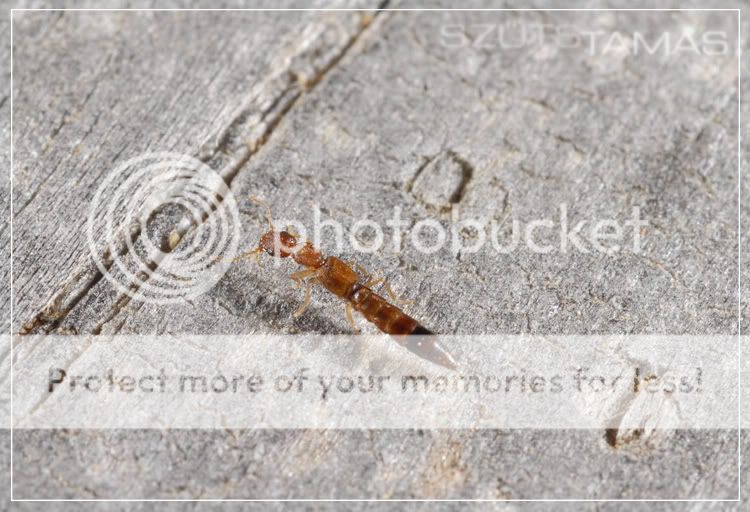 Staphylinidae: Aleocharinae? 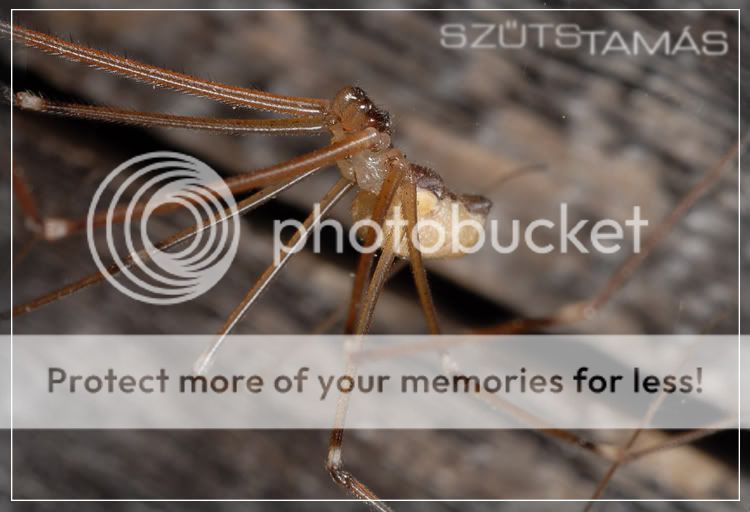 Pholcidae : likely Pholcus sp. 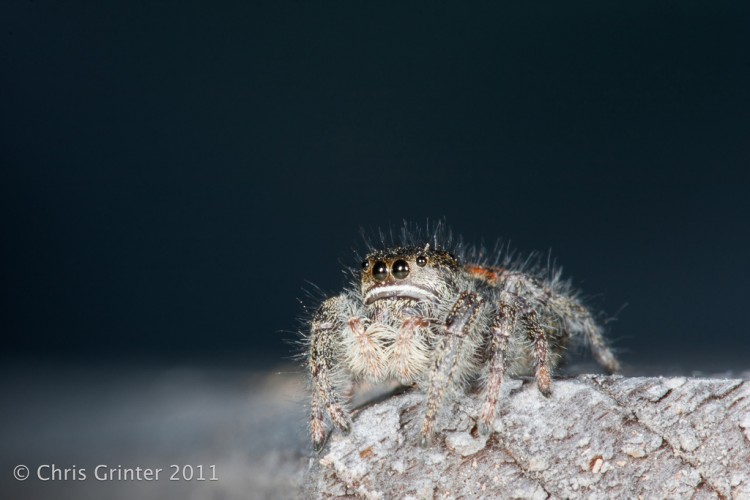 Salticidae: Phidippus sp. Continue reading Blue Oak Ranch Reserve
Chris Grinter, on April 6th, 2011 Labi – a few apologies for not having full images *yet* of the larvae in question (I will in a few days!). Over the weekend I was out with a group of Berkeley students on Mount Hamilton and PhD candidate Meghan Culpepper collected a few species of Scaphinotus and a some larvae! So the specimen from Monday was indeed the larvae of a Scaphinotus beetle feasting inside the shell of a native terrestrial snail. This challenge was a hard one since these predatory Scaphinotus larvae are rarely encountered and there are zero images of out there – and none of them feeding. Better luck next time!
For now, here is an undetermined Scaphinotus species. In the coming weeks I will have 4-5 species photographed and identified (by Meghan) – and the larvae will have to be sequenced for species ID. Sekojiet līdzi.
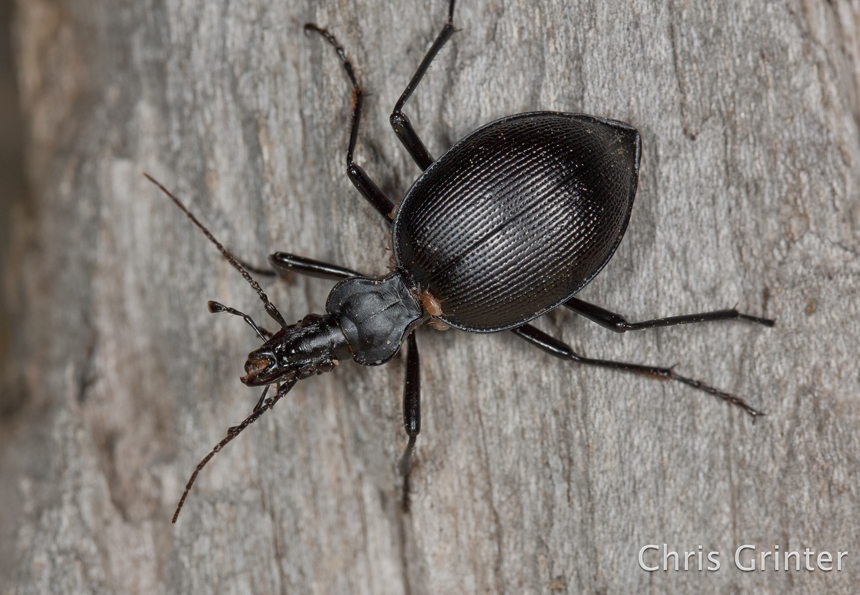
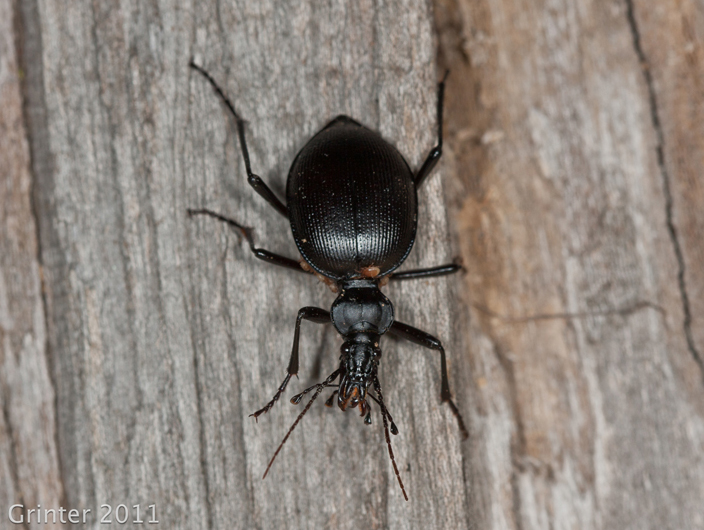
Chris Grinter, gada 4. aprīlī, 2011 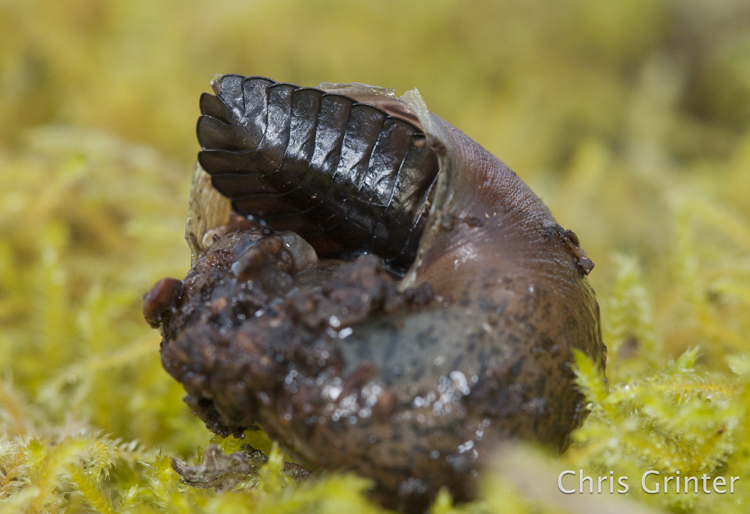
Saskāros ar šo puisi citā dienā, atrodoties laukā, kas šeit notiek? Punkti, kas tiek piešķirti par ordeni / ģimeni / ģints – bet pat šīs grupas eksperti vēl nevar noteikt sugu.
(visiem, kas ir kopā ar mani, jāpatur savi komentāri, līdz nāk minējumi!)
Chris Grinter, gada 30. martā, 2011 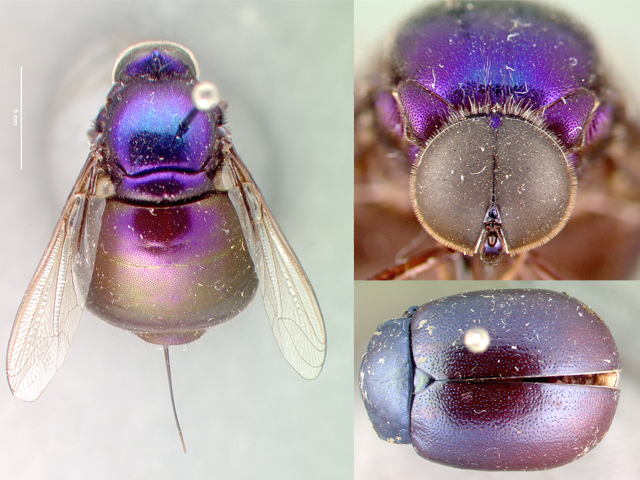 Lasia klttii: Aprīļa Nobiles fotogrāfijas, LIETAS Lasia klttii: Aprīļa Nobiles fotogrāfijas, LIETAS
Lielākoties mušas nav kukainis, par ko es pārāk aizraujos. Tomēr, mīklainā dzimta Acroceridae ir izņēmums. Ik pa laikam sākšu dalīties ar dažām interesantām ģintīm – dzimtas morfoloģija ir pārsteidzoši daudzveidīga. Lielāko daļu manas dienas pavadu muzejā, inventarizējot mūsu plašo kolekciju 16,000 Acorcerids (aka mazgalvu mušas). Tas var neizklausīties pārāk iespaidīgi, ja salīdzina to ar citām bagātīgākām ģimenēm (un tas nobāl salīdzinājumā ar pāri 17,500,000 cits eksemplāri, kas mums ir muzejā); bet izrādās, ka tas pārstāv daudzus, ja ne lielākā daļa, no visi pazīstami eksemplāri visai ģimenei. Lai gan citās iestādēs, iespējams, ir lielas šo mušu kopas, Kalifornijas Zinātņu akadēmija var viegli pieprasīt rekordu kopš Dr. Everts I. roll (kurš ik pa laikam ierodas strādāt no muzeja).
Izrādās, ka akrokerīdi ir diezgan grūti pētāma grupa, jo tie ir reti sastopami dabā, viņu parazitoidālā bioloģija, un cik grūti tos var būt noķert uz spārna. Viņu lielais krūšu kurvis ir piepildīts ar muskuļiem, kas raķetē mušu pa gaisu – tāpēc, ja jūs tos nenoķerat pie zieda, jūs ilgojaties pēc savārguma lamatas. Evs man pastāstīja vienu stāstu par to, kā Kostarikā mācījos tos noķert uz spārna. Jūs stāvat pa vējam no kolēģa uz lauka – tiklīdz kāds dzird, ka kaut kas aiziet garām, jūs mežonīgi šūpojaties, cerot nejauši notvert mušu… tas darbojas ik pa laikam. Šīs mušas ir arī vienīgie zināmie pieaugušo zirnekļu endoparazīti (var būt ieraksts par Tahinīdu…). Iepriekš minētā ģints, NeoLāzija, ir Theraphosid tarantulas parazīts (kaut kas kā Afonopelma). Kā kāpurs muša uzskrien augšup pa zirnekļa kājām un ierokas vēderā, kur pēc tam iekārtojas blakus grāmatas plaušām un iedur nelielu elpošanas caurumu.. Tad tas pacietīgi gaida, kamēr zirneklis tuvosies briedumam. Ar sieviešu kārtas tarantulu, muša varētu būt snaudoša gadu desmitiem. Beidzot notiek kaut kas līdzīgs filmai Citplanētieši, un kāpuri barojas ar zirnekļa iekšējiem orgāniem, un tad iznirst, lai iedzīvotos.. Bet noskaidrot, vai zirneklim ir vai nav parazīts, nav iespējams bez preparēšanas – tāpēc, lai iegūtu saimnieku ierakstus, ir jāuztur lielas dzīvu zirnekļu kolekcijas. Parazitoidu bioloģija ir tik forša.
Iepriekš minētais paraugs (Lasia klttii jauns, nenosaukts, suga) tika savākts 1977 ar Šlingeru netālu no Alamosas pilsētas, Meksika – uz ziediem ar iespējamo imitācijas modeli, Chrysomelidae vabole (vaboļu cilvēki, jebkādas idejas ārpus ģimenes?).
Chris Grinter, gada 24. martā, 2011 Better be careful of what you do while out in the countryside. Farms can be dangerous places, especially if you’re a photographer. Proposed legislation in Florida, titled simply “farms”, is attempting to make photography or drawings in, on or no a farm without explicit written consent a first degree FELONY (up to 30 years in prison). What could possibly be the justification for this legislation? Journalist Barry Doyle suggests the good Senator is tightly in the pockets of Agribusiness – looking out for those poor farmers who are targeted by animal rights groups or even worse – human rights groups! I tend to concur, this legislation is a disgusting piece of corruption. It gets pretty bad:
(2) A person who photographs, video records, or otherwise produces images or pictorial records, digital or otherwise, at or of a farm or other property where legitimate agriculture operations are being conducted without the written consent of the owner, or an authorized representative of the owner, commits a felony of the first degree…
I strongly encourage any of my Florida readers to write to Senator Norman and express your absolute disgust in his legislation.
14031 N. Dale Mabry Blvd.
Tampa, FL 33618
(813) 265-6260
Senate VOIP: 41200
I also encourage everyone else everywhere else to write to your US representative and exclaim your outrage over this possible violation of first amendment rights (only a proposed violation at this moment).
And just for good measure, here is a bad cellphone picture I took while in Oregon with lots of farms.
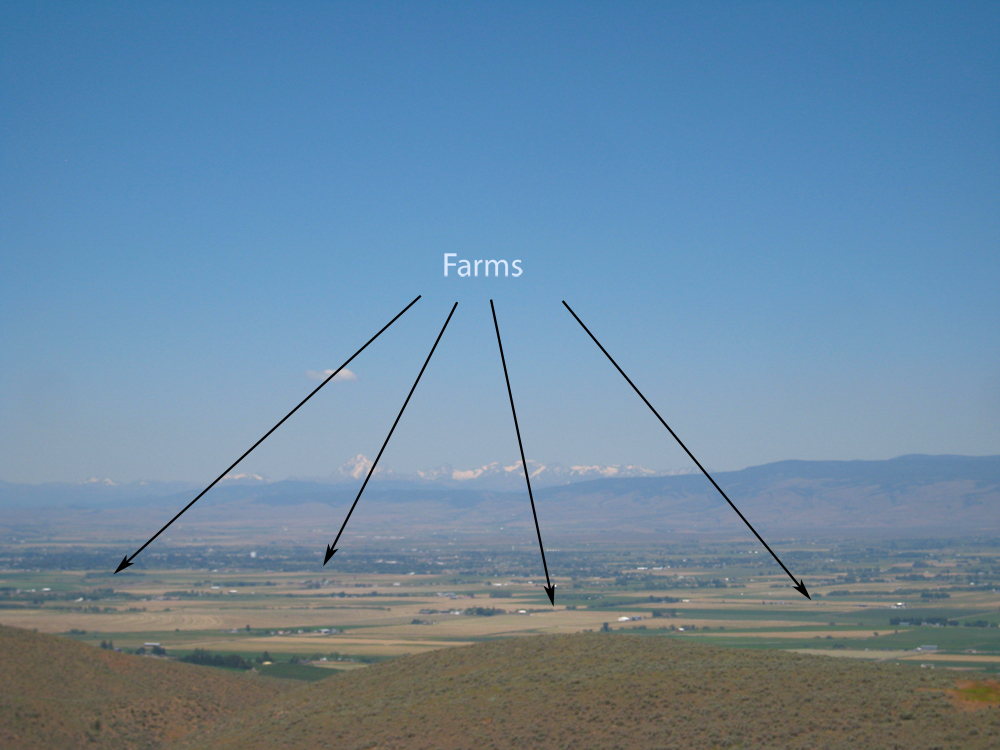
Chris Grinter, gada 22. martā, 2011 Usually I come across horrible entomology articles regularly enough that I save a backlog for future series. This hasn’t been the case over the last few weeks, I haven’t come across the normal array of terrible media crud. Maybe I just get jaded and stop looking as carefully – but this week I even came across a moth related correction from the Maui News. They fixed their error, but must have deleted the original article…
And for this week I found this article with the image below. Should be pretty easy to spot the weirdness (viņi do at least manage to point out that the moth is nē the LBAM (light brown apple moth)).
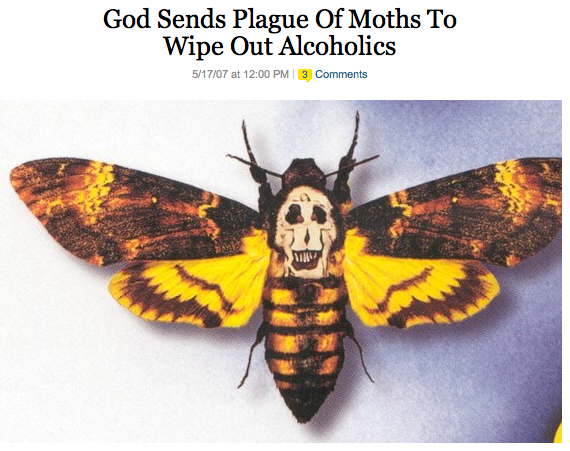
Chris Grinter, gada 18 marts, 2011 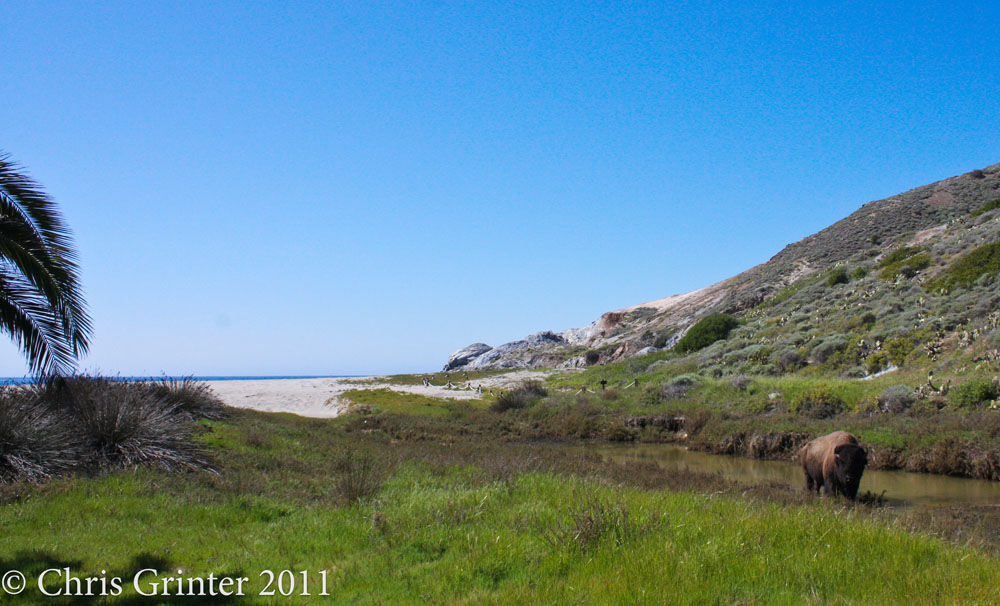
Varbūt vienīgā vieta pasaulē, kur var atrast amerikāņu bison (VS. bifelis) stāvot pie pludmales blakus palmu koku. Gada Santa Catalina nedēļa bija brīnišķīga 1, un, neskatoties vēsā pavasarī ar dažiem unseasonable salnām, dažas pienācīgas kolektīvā tika veikts. Here are just a few amusing images and you’ll notice one thing right away: no fields of wildflowers! As it turns out, almost a century of goat, pig and bison grazing has left mostly grass and cactus on the island. At one point there were over 1000 bison and countless herds of goats; it’s a wonder anything survived at all! Šodien, there are thankfully only a modest ~200 bison left that are even on birth control (you guessed it, you can’t shoot the damn things since people “love” them – just like the stupid eucalyptus you can’t cut down). In 1924 a small heard of bison were brought over to shoot the movie The Vanishing American. Dabiski, the project went over budget, the scene was cut and the animals were let loose instead of paying to return them home. 80 years later and you’re left with an island you can only fight to “conserve” and not restore. Sad fact is that we have no clue what the island actually used to be like. It’s even hypothesized that the endemic island fox (of which we saw 6!) was brought over by indigenous peoples a few thousand years ago from neighboring islands. I guess it’s in our nature to mess with our environment.
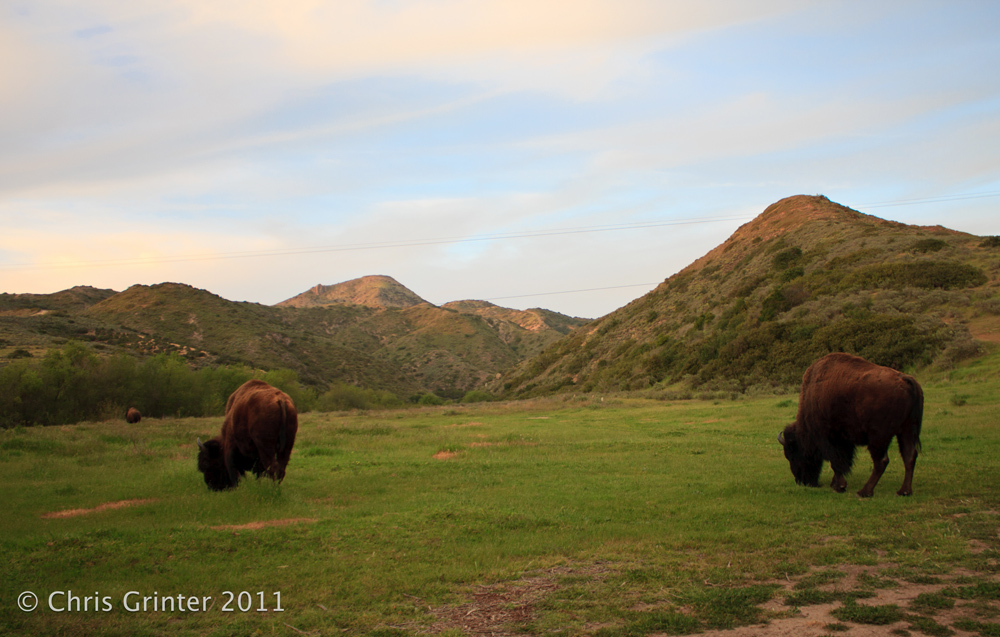
As I was photographing the above, this beast walked up behind me. It wasn’t running, I was!
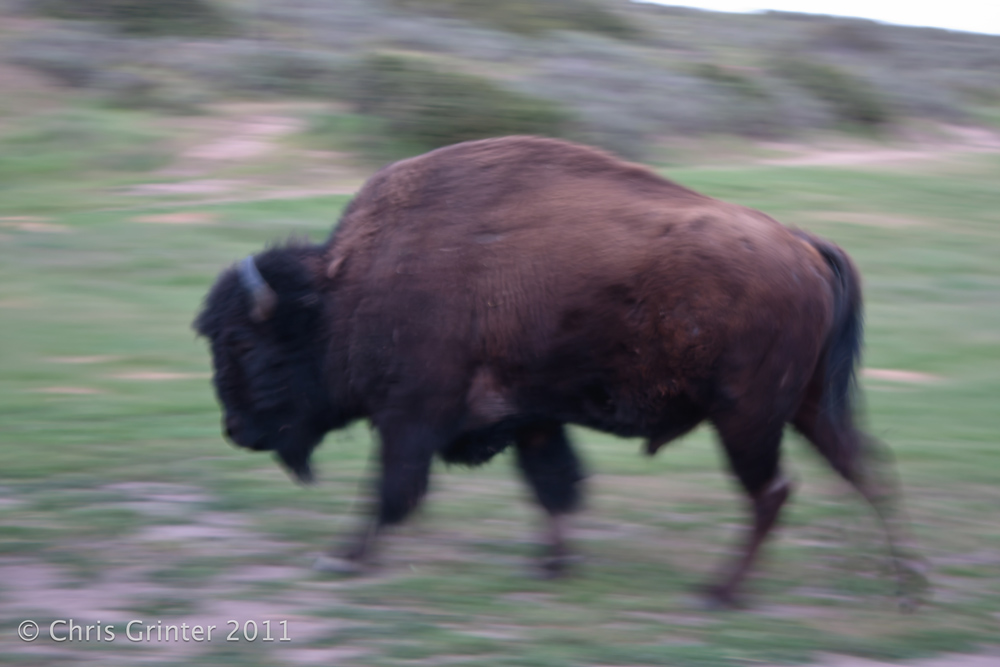
Chris Grinter, on March 8th, 2011 [cetsEmbedGmap src=http://maps.google.com/maps?ll=33.393039,-118.416824&spn=0.359452,0.715485&t=h&z=11 width=600 height=330 marginwidth=0 marginheight=0 frameborder=0 scrolling=auto]
Tomorrow morning I’m off for a 10 day collecting trip down to Katalīnas sala. I’ve been lucky enough to be invited to join Dr. Jerry Powell of UC Berkeley on a moth survey, and this will be my first time to any of the islands. The Channel Islands are known for their high levels of endemism, and none is more famous than the Channel Island Fox. There are also a handful of endemic butterflies and moths that I’ll be hoping to find, but at the very least I know it’s wildflower season and I’ve got my camera primed.
I will likely have little or no access to the internet while staying on the island, so hang tight for a week. Had I planned ahead I would have scheduled posts or a guest author! Please do stay tuned for some of my first images of the 2011 field season.
Chris Grinter, gada 3. martā, 2011 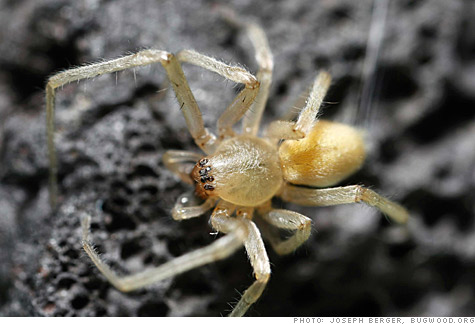
Acīmredzot something in the Mazda 6 fuel line is warm and inviting for the yellow sac spider, enough so that they are building webs over the vent systems of the 4 cylinder vehicles (and not the 6!). The problem has been deemed a “spider infestation” by the car company, and the clogged vent lines then can lead to a cracked gas tank and the possibility of a fire.
“A certain type of spider may weave a web in the evaporative canister vent line and this may cause a restriction of the line”
So far only 20 cases are confirmed, but this problem is prolific enough that it has lead to a recall of over 52,000 sedans! I think it’s high time the major car companies hire entomology consultants – after all, my retainer would be a lot less than the cost of that recall…
I consulted with our resident team of arachnologists here at the LIETAS, and the above image does appear to be a sac spider. It’s too hard to tell from the image, but it’s probably not an egregious taxonomic failure.
|
Skepticisms
|














